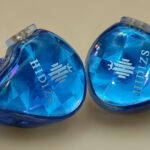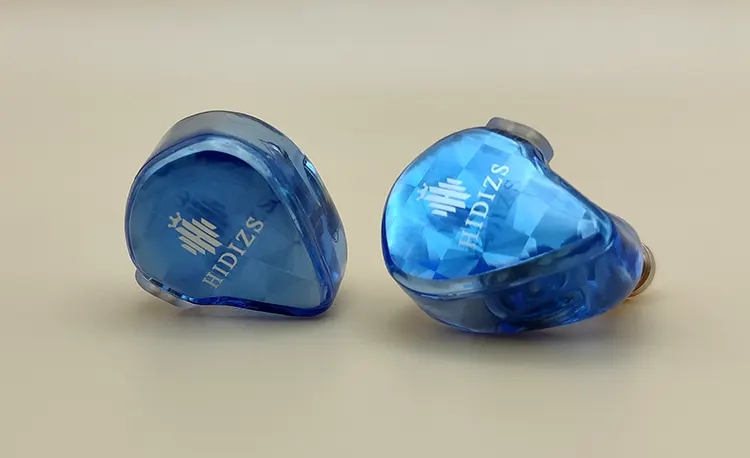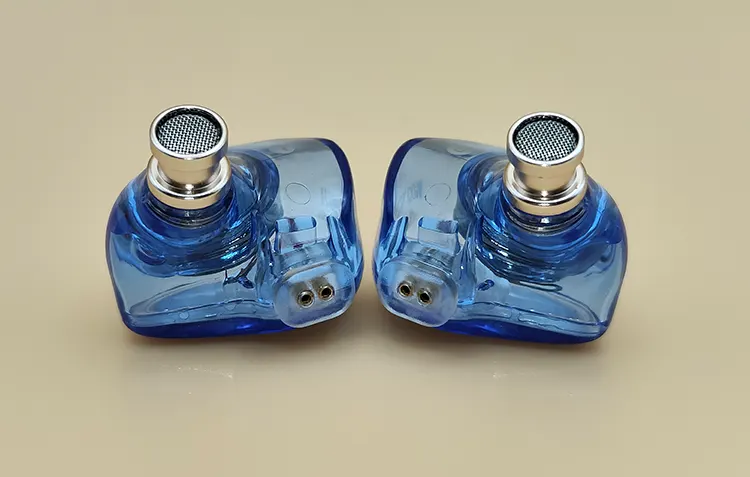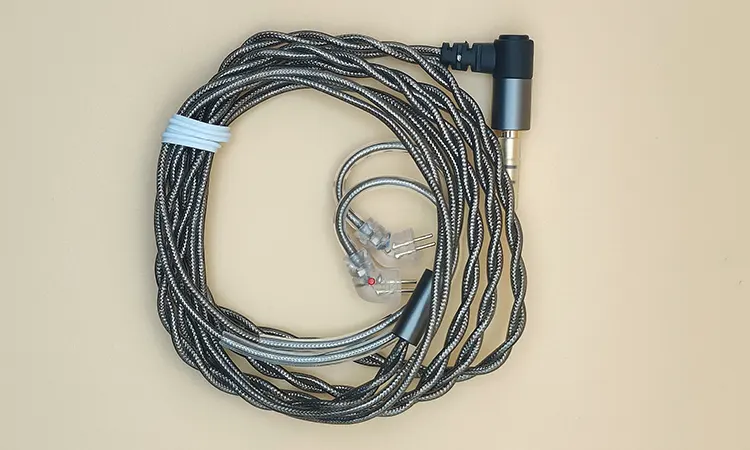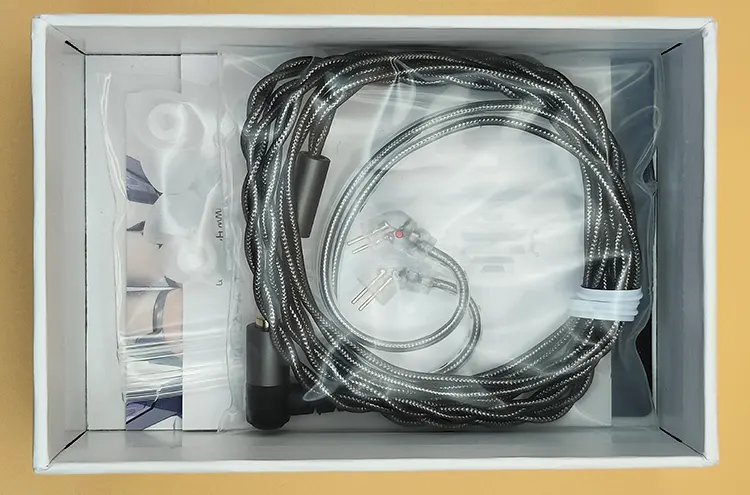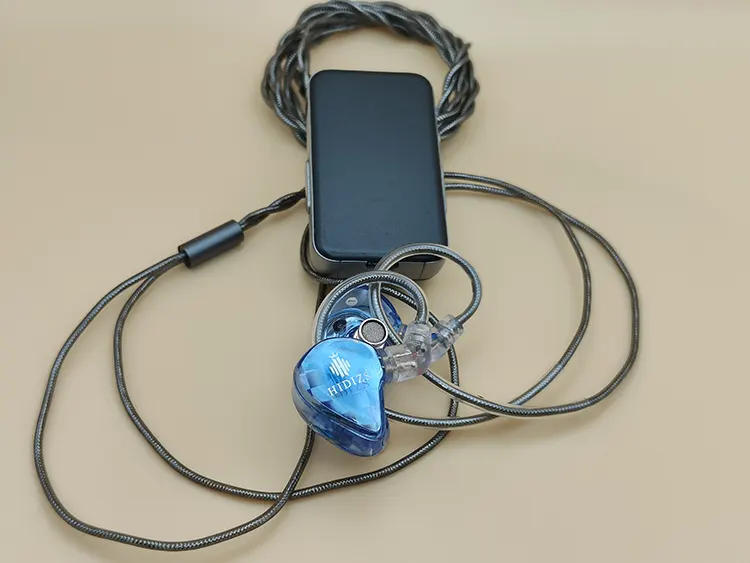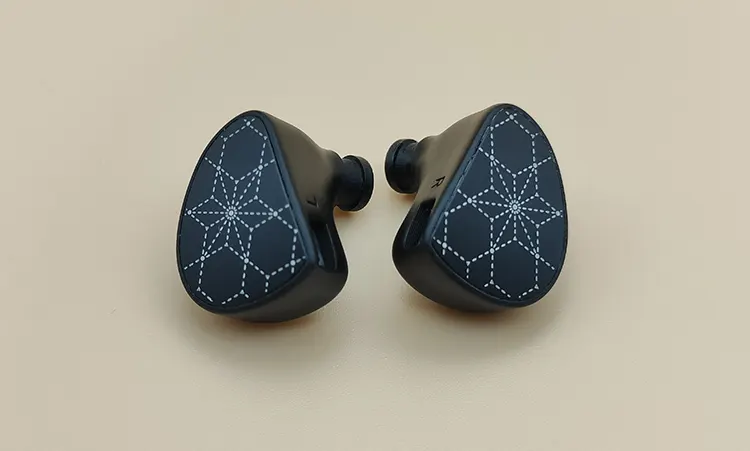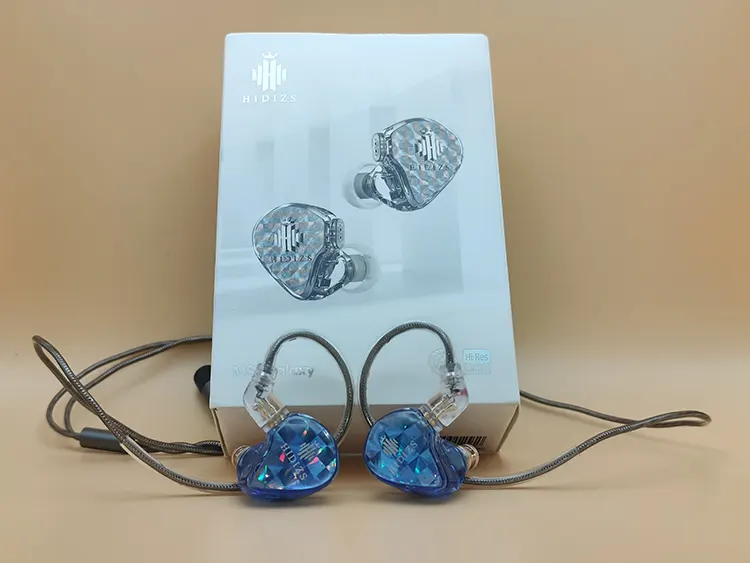In this feature, we review the Hidizs MS1 Galaxy, which is an entry-level single 10.2mm dual magnetic circuit dynamic driver universal IEM. It is priced at $25.99 SRP.
Disclaimer: This sample was sent to us in exchange for our honest opinion. Headfonics is an independent website with no affiliate links or status. We thank Hidizs for their support.
To read more about Hidizs products we have previously assessed on Headfonics click here.
Please note, that this article follows our current scoring guidelines which you can read in more detail here.
Hidizs recently launched the MS1 Galaxy, which is a new ultra-budget contender priced at just $25.99 SRP and one that houses a 10.2mm dual magnetic dynamic driver.
Compared to their other IEMs like the MS3, MP145, and the MS5, the MS1 Galaxy is the most affordable gear in their lineup.
Featuring a great shell design and bassy tuning, can it compete with the other budget IEMs in the market as well?
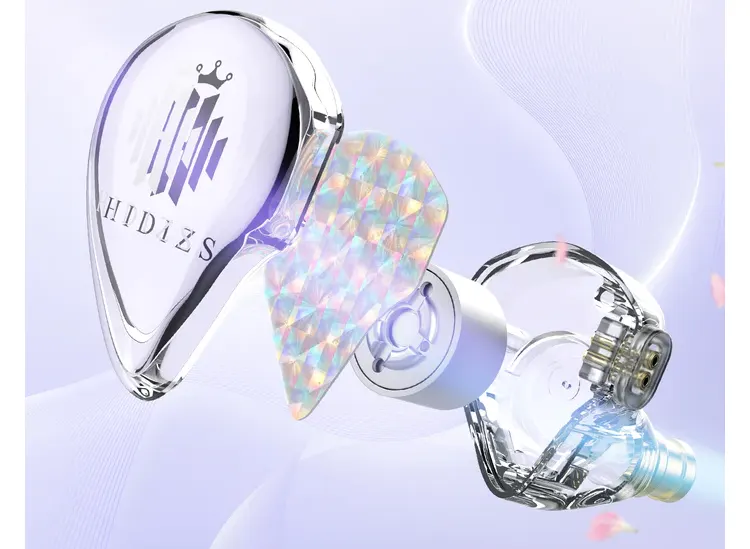
Tech Highlights
The Hidizs MS1 Galaxy uses a 10.2mm dual magnetic dynamic driver complete with a PU+PEEK composite polymer diaphragm.
This type of polymer diaphragm has been around for a long time now and is known to give cleaner sound, less distortion, more uniform thickness, and better sensitivity.
It has a sensitivity of 108 dB @1kHz and an impedance of 32Ω which makes it easy to run through any portable audio player or dongle DAC.
Design
The Hidizs MS1 Galaxy has an attractive design for its price point. It’s available in different colors, namely black, red, blue, and a mixture of those three with either a microphone or no microphone.
For their faceplates and shells, it uses high-density German Makrolon resin to ensure stable and non-irritating properties for the user. It also uses injection molding to create this premium look for the faceplates.
The faceplate has a diamond-like design that’s covered by resin to protect it. It rocks a clear design showing the dynamic driver, 2-pin connector, and wires too.
The nozzle has an average length which won’t give anyone problems. It also has a nozzle lip to ensure your tips don’t slide away as well.
Comfort and Isolation
The Hidizs MS1 Galaxy is a very comfortable fit but suffers from poor isolation.
It will fit anyone regardless of ear size. For me, it fits and sinks well into my ears to the point it looks like it has melded with my ears.
Unfortunately, isolation is below par for the MS1 Galaxy. Aside from letting out sounds that someone nearby will hear, you’ll also hear that person’s noise with this.
I’ve tried different tips to see if it’s a tip problem, but nothing changed. It seems to be a design concern which will be an issue for those who use IEMs as earplugs.
Tips
The tips the Hidizs MS1 Galaxy has are the usual silicone tips that most budget IEMs have. It’s a set of small, medium, and large tips. The type of silicone used for this doesn’t seem to be unique like the resin used for their shell.
It feels like any silicone would but has a powdered finish when I first touched it. It works fine in my usage as well. The stems have a wide bore, so you can expect to hear more details.
Stock Cable
The MS1 Galaxy uses a 0.78mm silver-plated oxygen-free detachable copper cable. This type of cable reduces the chances of oxidation that other budget cables have; it won’t be turning green anytime soon!
It’s a 3.5mm 2-core cable no-nonsense design. The 0.78mm terminations are marked with dots, the blue dot for the left, and the red dot for the right.
This cable is good for daily usage despite it looking like those cable protectors that you’d buy back in the 2010s. Its downside is that it’s stiff and thin which might give long-term concerns.
Package & Accessories
The Hidizs MS1 Galaxy comes with its silicone tips, 3.5mm 0.78mm 2-core oxygen cable, guidebook, and anime waifu card. Unlike other budget IEMs, this one doesn’t give us the luxury of a pouch.
Sound Impressions
Bass
This has good bass. It’s that type of bass you’ll hear, tap your feet to, and shake your head along the beat.
There’s a lot of quantity in the bass, especially in the mid-bass, which gives a good bump to those punches. The quality isn’t good here though and is heavily compensated for by the rumbling bass.
This isn’t a clean bass, but rather it is a full-sounding bass. You’ll be trading quality for a lot of quantity for this IEM.
At times, it will sound bloated because it heavily masks the vocals and instruments. This type of bass is ideal for those who like to feel more bass.
Mids
The Hidizs MS1 Galaxy’s mids are a mixed bag. It’s good for male vocals but bad for female vocals. For male vocals, it’s thick, lush, and has good timbre. For female vocals, it’s thin, recessed, and unnatural.
The mids aren’t forward enough for either of the vocals. It sounds veiled, like a piece of plastic is on them whenever vocals are the main point of the track. The redeeming factor is the great male vocals. Its timbre is great, thick, and natural.
I wouldn’t pick this IEM if your library has a lot of female vocals. Their vocals sound off and shrill most of the time. Instrumentals, like orchestras, would also suffer the same fate as female vocals. This also has bad timbre which isn’t correct at all.
Treble
Treble extension is one of the better parts of the Hidizs MS1 Galaxy. It’s relaxed and non-fatiguing compared to the competition.
It has enough sparkle but lacks details in return. It doesn’t resolve most music as well; it’s missing that one instance to make the music sound complete.
But for those who are easily treble-fatigued, this will do the job for you. Laid-back listening is good with the MS-1 without hearing too much energy or sibilance.
Imaging
This is a weak point of the Hidizs MS1 Galaxy. It’s underwhelming to the point where there’s no depth to both its imaging and soundstage. It can’t portray where instruments are that well. It can only do left and right imaging to a weak degree.
Its soundstage is also disappointing. Again, there’s no depth to it and the dimensions within the music are small.
Compared to its competition, this is lacking as it doesn’t portray tracks and music as well. This might be due to tuning or driver limitation, or even both.
Synergy
Efficiency
The Hidizs MS1 Galaxy’s impedance rating of 32Ω is within the normal range. There won’t be any problem running this out of any device.
A smartphone, a DAP, a dongle, or anything like it will give it enough juice for what you need. Also, it handles electrical signals well enough to not worry about voltage swings.
Meanwhile, its sensitivity is rated at 108 dB, which is within the middle range, so it is unlikely you will get those hissing or static sounds from portable amps with higher noise floors. You also won’t need to worry about the loudness of it as there is plenty of headroom from most source volume controls.
Select Comparisons
Truthear Hola
Technical
The Truthear Hola comes with a bigger single 11mm dynamic driver. It has a 120db/Vrms sensitivity and 28Ω impedance, which makes it easy to run off any device.
Design
The Truthear Hola has a minimalistic uniform black design with a flower-like pattern on its faceplate. Its shell is 3D printed by HeyGears and made out of solid opaque resin.
It has 2 vents on its shell to alleviate pressure on the ears. Aside from that, it’s your standard fits-all IEM.
Performance
Compared to the Hidizs MS1 Galaxy, the Truthear Hola can be said as its cleaner sibling. They try to deliver similar things in certain areas.
Starting with the bass, they both have generous amounts of bass, both subbass and midbass. They want to give better timbre for those instruments and vocals.
The subbass and midbass of the Truthear Hola are significantly less compared to the Hidizs MS1 Galaxy. The Truthear Hola’s bass is less enjoyable than the strong rumbling and hard-hitting punches of the Hidizs MS1 Galaxy’s bass.
For the mids, the Truthear Hola is the opposite of the Hidizs MS1 Galaxy. Their weaknesses and strengths are opposite of each other.
Their difference starts to show with female vocals. The Truthear Hola balances out the thickness of both female and male vocals, making both shine evenly.
The Hidizs MS1 Galaxy can’t do that since female vocals just sound thin and recessed in all types of music. The male vocals will just overpower female vocals which creates an unbalanced audio experience.
The edge that Hidizs MS1 Galaxy has on this is that male vocals just sound correct. That vocal thickness that it has makes other IEMs’ male vocals sound thin and insufficient.
For the treble, the Truthear Hola has more sibilance. The cymbal strikes and the ‘sh’ sounds are more prominent and irritating here.
The difference isn’t that big but it is something I heard in some tracks. The Hidizs MS1 Galaxy still has the sparkle the Truthear Hola has without the sibilance.
In the imaging department, the Hola does better than the Hidizs MS1 Galaxy. Instruments are better positioned around you.
7Hz Salnotes Zero
Technical
The 7Hz Salnotes Zero comes with a similar 10mm dynamic driver. It also has a 108 dB sensitivity and 32Ω impedance, making it similar to the Hidizs MS1 Galaxy in this regard.
Design
The 7Hz Salnotes Zero uses a plastic chassis with a stainless-steel faceplate. The resin build of the Hidizs MS1 Galaxy is built better making its durability stronger.
The design of the 7Hz Salnotes Zero is below average in my opinion. It pales a lot in comparison to the diamond-like pattern of the blue Hidizs MS1 Galaxy I’ve used.
It’s also less comfortable on the ears since this set has sharp edges making it a pain for the ears. The Hidizs MS1 Galaxy has rounded edges that are ergonomic in shape, making it better for smaller ears.
Performance
Compared to the Hidizs MS1 Galaxy, the 7Hz Salnote Zero is more analytical in sound. There is more clarity, resolution, and vocal forwardness in this set.
It trades bass quantity and bass enjoyment in exchange for a more clean and detailed sound. You will hear the cymbals and whispers hidden in your music with this one.
Unfortunately, the treble performance is affected negatively in the 7Hz Salnotes Zero. There is strong sibilance that will be heard in most music.
This will be the deal breaker for the 7Hz Salnotes Zero that the Hidizs MS1 Galaxy doesn’t have. The laid-back sound from the Hidizs MS1 Galaxy is the opposite of whatever the 7Hz Salnotes Zero is having.
For female vocals, the 7Hz Salnotes Zero wins in this regard. It sounds cleaner, more forward, and better timbre.
The Hidizs MS1 Galaxy struggles in that regard since female vocals sound thin and anemic with it. It’s also recessed in the background, unable to make those vocals shine as they should.
In exchange, the male vocal’s note weight and timbre are thinner for the 7Hz Salnotes Zero. Some people will want more midbass to give their male vocals life and depth.
The Hidizs MS1 Galaxy does not struggle in this regard. Male vocals are the bread and butter of the Hidizs MS1 Galaxy since this set gives male vocals a lot of note weight and a good thick timbre.
For imaging, the 7Hz Salnotes Zero will be better here. It places the vocals and instruments better on a larger stage.
Yes, instruments have a larger playing field with the 7Hz Salnotes Zero that the Hidizs MS1 Galaxy doesn’t have. The Hidizs MS1 Galaxy unfortunately has too little of a stage for proper imaging.
Our Verdict
Even as the company’s go-to budget IEM, the Hidizs MS1 Galaxy follows its family line in regards to how the mids and treble are tuned. The mids are less forward in exchange for better male vocals and some instrument thickness and timbre.
It does its job well to introduce the in-house sound of the Hidizs lineup. This isn’t bad tuning, just a unique one with a focus on male vocals that fit well in certain music.
Aside from the sound, the cable in the box is also a decent one. There aren’t a lot of better cables in the competition for the Hidizs MS1 Galaxy’s cable.
Its fit is also great. Anyone can wear this and feel how comfortable it truly is; Hidizs weren’t lying with better materials for the shell!
If you’re someone like me who sleeps while wearing IEMs, then you can get the Hidizs MS1 Galaxy.
Hidizs MS1 Galaxy Technical Specifications
- Driver Type: 10.2mm dual magnetic circuit single cavity structure, PU+PEEK composite polymer diaphragm dynamic driver
- Plug: 3.5mm single-ended standard 0.78mm-2pin
- Frequency Response: 20Hz – 46kHz
- Impedance: 32Ω±15%
- Sensitivity: 108db/Vrms
- THD: ≤0.1%


